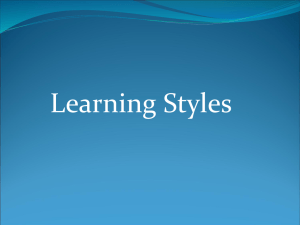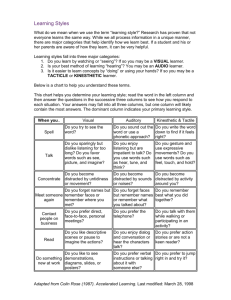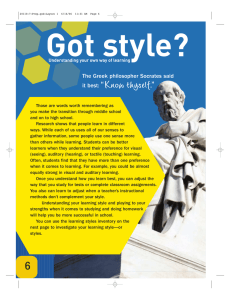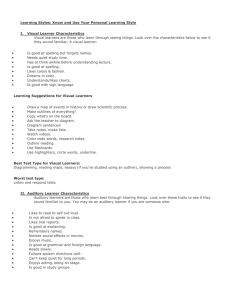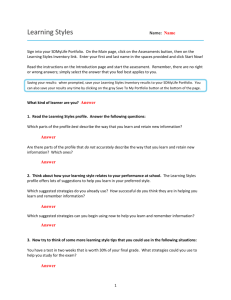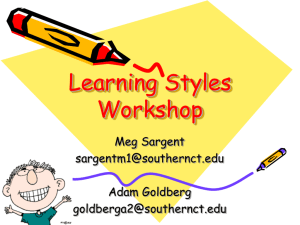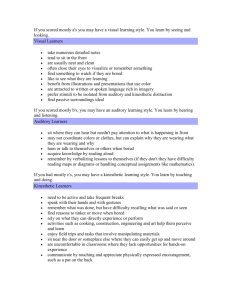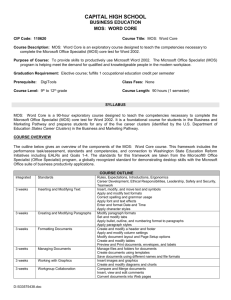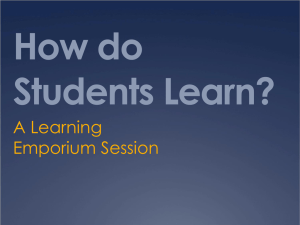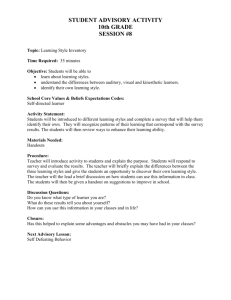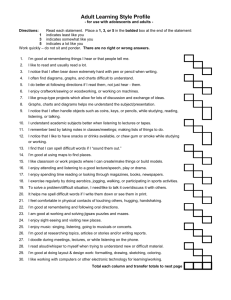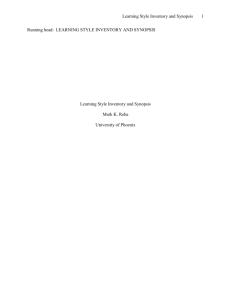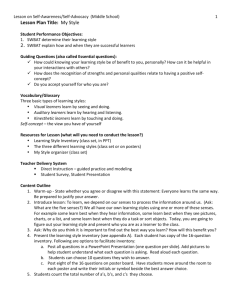Learning Styles
advertisement
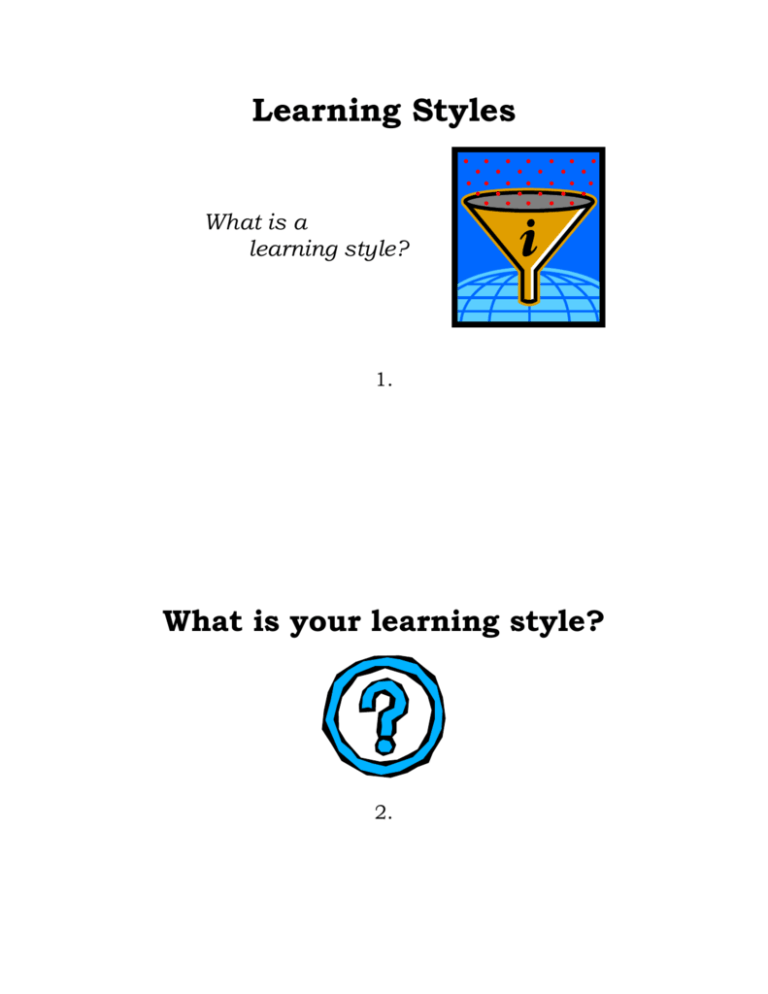
Learning Styles What is a learning style? 1. What is your learning style? 2. Learning Styles Learning styles are simply different approaches or ways of learning. Once you figure out the way you learn, you will know what strategies to use to fit your learning. You can find out what your learning style is by asking your tutor or instructor for a Learning Style Assessment! Learning Styles There are 3 types of learning styles. Can you identify each style? 3. Types of Learning Styles Visual: Visual Learners learn through seeing….. What are the characteristics of a visual learner? 4. Learning Styles Visual Auditory Tactile/Kinesthetic Characteristics of a Visual Learner: Reader/observer Scans everything; wants to see things, enjoys visual stimulation Enjoys maps, pictures, diagrams, and color Needs to see the teacher’s body language/facial expression to fully understand Not pleased with lectures Daydreams; a word, sound or smell causes recall and mental wandering Usually takes detailed notes May think in pictures and learn best from visual displays Make your learning style work for you! Visual Learners What can I do as a visual learner to improve my skills as a student? 5. Types of Learning Styles Auditory: Auditory Learners learn through listening and talking things through…….. What are the characteristics of a auditory learner? 6. Make your Learning Style work for you! Visual Learners: Have a clear view of your teachers when they are speaking so you can see their body language and facial expression Use color to highlight important points in text Illustrate your ideas as a picture and use mind maps Use multi-media such as computers or videos. Study in a quiet place away from verbal disturbances Visualize information as a picture to aid learning Make charts, graphs and tables in your notes. Participate actively in class—this will keep you involved and alert When memorizing material, write it over and over Keep pencil and paper handy so you can write down good ideas. Characteristics of an Auditory Learner: Interpret the underlying meanings of speech through listening to tone of voice, pitch, speed and other nuances Prefers directions given orally Seldom takes notes or writes things down Prefers lectures to reading assignments Often repeats what has just been said; talks to self Make your learning style work for you! Auditory Learners What can I do as an auditory learner to improve my skills as a student? 7. Make your Learning Style work for you! Auditory Learners: Think aloud and talk to yourself Participate in class discussions/debates Make speeches and presentations Read text out loud—especially when proofreading or when tired Create musical jingles and mnemonics to aid memorization Use a tape recorder Discuss your ideas verbally with a friend or small group Use verbal analogies When doing math computations by hand, use graph paper to help you keep your columns aligned Recite information over and over to better memorize material You may want to sit near the side or back of the classroom where there is less visual stimulation Types of Learning Styles Tactile/Kinesthetic: Tactile/Kinesthetic Learners learn through moving, doing and touching…….. What are the characteristics of a Tactile/Kinesthetic learner? 8. Make your Learning Style work for you! Tactile/Kinesthetic Learners What can I do as a Tactile/Kinesthetic learner to improve my skills as a student? 9. Characteristics of a Tactile/Kinesthetic Learner: The “Do-er” Needs to touch, handle, manipulate materials and objects, especially while studying or listening Counts on fingers and talks with hands Good at drawing designs Often doodles while listening, thus processing information Good at sports, mechanics, using appliances and tools Often adventurous May find it hard to sit still for long periods May become distracted by their need for activity and exploration Make your Learning Style work for you! Tactile/Kinesthetic Learners: Take frequent study breaks and vary your activities Make studying more physical—work at a standing desk, chew gum, pace while memorizing. read while on an exercise bike, mold a piece of clay, squeeze a tennis ball Use bright colors to highlight reading material Dress up your work space with posters and color Play music in the background while you study When reading, first skim through the whole thing to get a feel for what its about, then read the chapter carefully Use spatial note taking techniques such as mind mapping Visualize complex projects from start to finish before beginning—this will allow you to keep the big picture in mind Have someone proofread your papers
